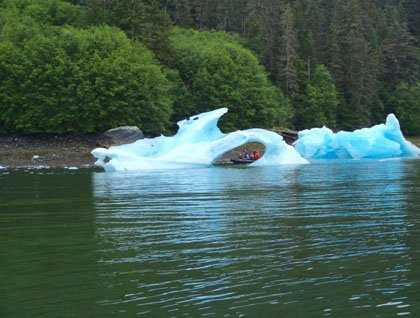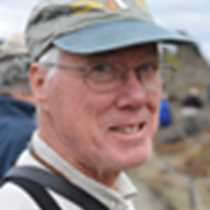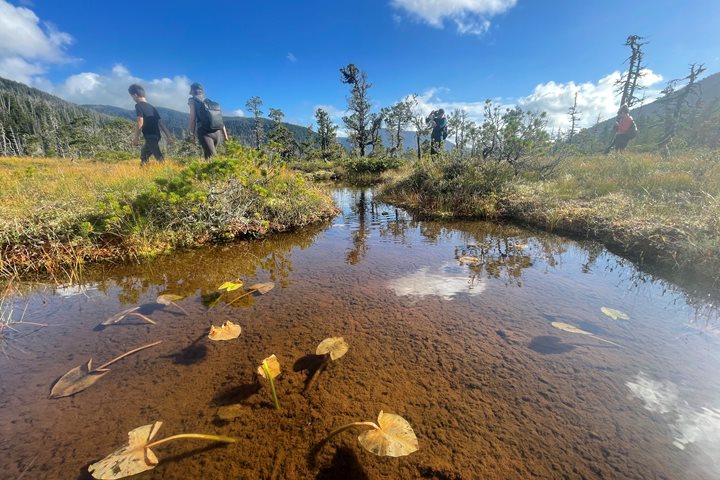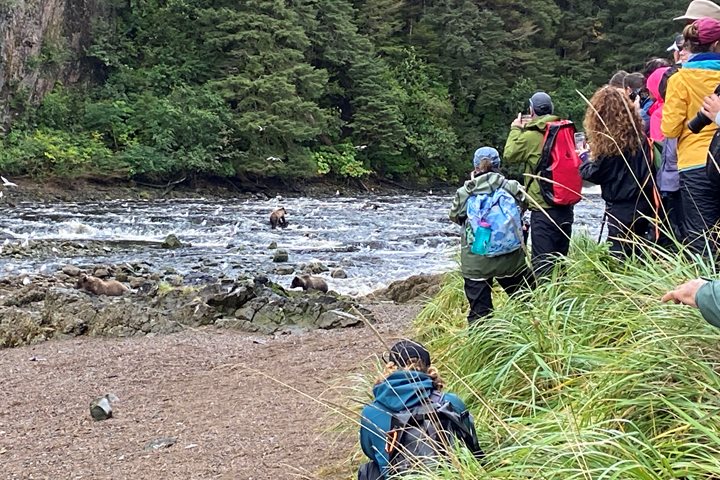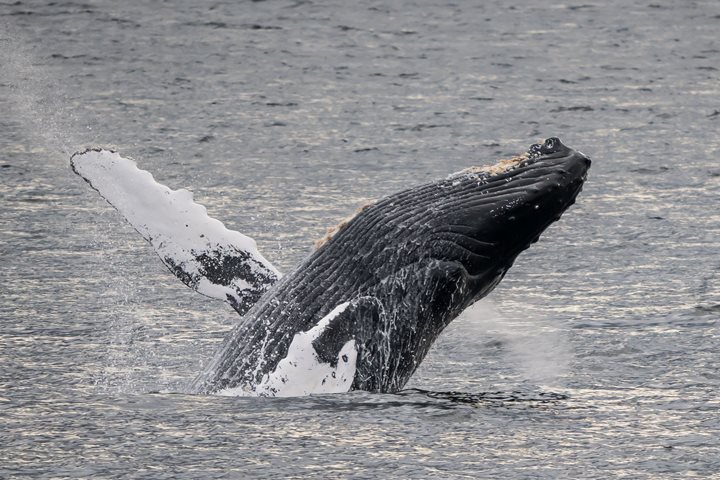After four days of the finest weather, we awoke to more usual Southeast Alaska weather. Low clouds obscured the steep slopes that surround Frederick Sound, seemingly snagged on the tops of tall spruce and Western hemlock. After a warm and dry May and June, the forest needs rain. It is, after all, a Temperate Rainforest that we have come to experience, and we didn't bring the all our raingear only to take it home unused. Well protected from the morning mist, be boarded our inflatable craft in LeConte Bay. The LeConte glacier is Alaska's southernmost tidewater glacier. In recent years it has been disgorging huge quantities of ice into the Bay as it is has retreated back into the mountains some eight miles. The larger bergs are stranded on the shallows created by the former terminal moraine of the glacier, and these are what we have come to see. The overcast light of the morning emphasizes the blue color of the glacial ice, as the bergs melt, roll, and erode into phantasmagorical shapes and textures. The clearest ice, devoid of air bubbles, gives the most vivid blue color, but only in large pieces. Smaller pieces of ice that were only recently part of the glacier appear as the finest crystal, and many a piece found its way aboard the craft to be passed around and admired, and then returned to the sea.
Our afternoon destination was the nearby town of Petersburg. This is a real Alaskan fishing community. Most of the population of about 3,100 derive their income, directly or indirectly, from the harvest of seafood from the surrounding waters. The problem with our visit to Petersburg is that there are just too many interesting options competing for our time and attention. Some took advantage of the opportunity to fly over the Patterson and LeConte glaciers, looking down at the rivers of ice that join to form the glacier terminus. A walk on the dock exposed us to the several types of fishing vessels that harvest the catch: seiners (for pink salmon), long-liners (for halibut and the black cod that graced our dinner table last night), trollers (for king and coho salmon), and gill-netters for the several salmon species. Alaskans are justifiably proud of their wild-caught salmon; there will be no farm-raised salmon here! A short boat ride across Wrangell Narrows to the adjacent island of Kupreanof allowed a walk through the old-forest to reach a muskeg bog. Bicycles were available for a ride around the town. And, finally, there was the option of simply strolling around the town, poking into the bookstore and the hardware store that keeps the fleet at work, and finding new ways to record it all photographically.
While we’re away on our various activities, boxes of fresh Alaskan seafood came aboard the National Geographic Sea Bird. Dungeness crab season opened only three days ago, and our dinner consisted of crab fresh from the sea. Nobody went away hungry, as fresh plates of steaming crab parts arrived just as fast as we could consume them. With the carnage of flying shell fragments in the dining room, we enjoyed our dessert in the lounge.

